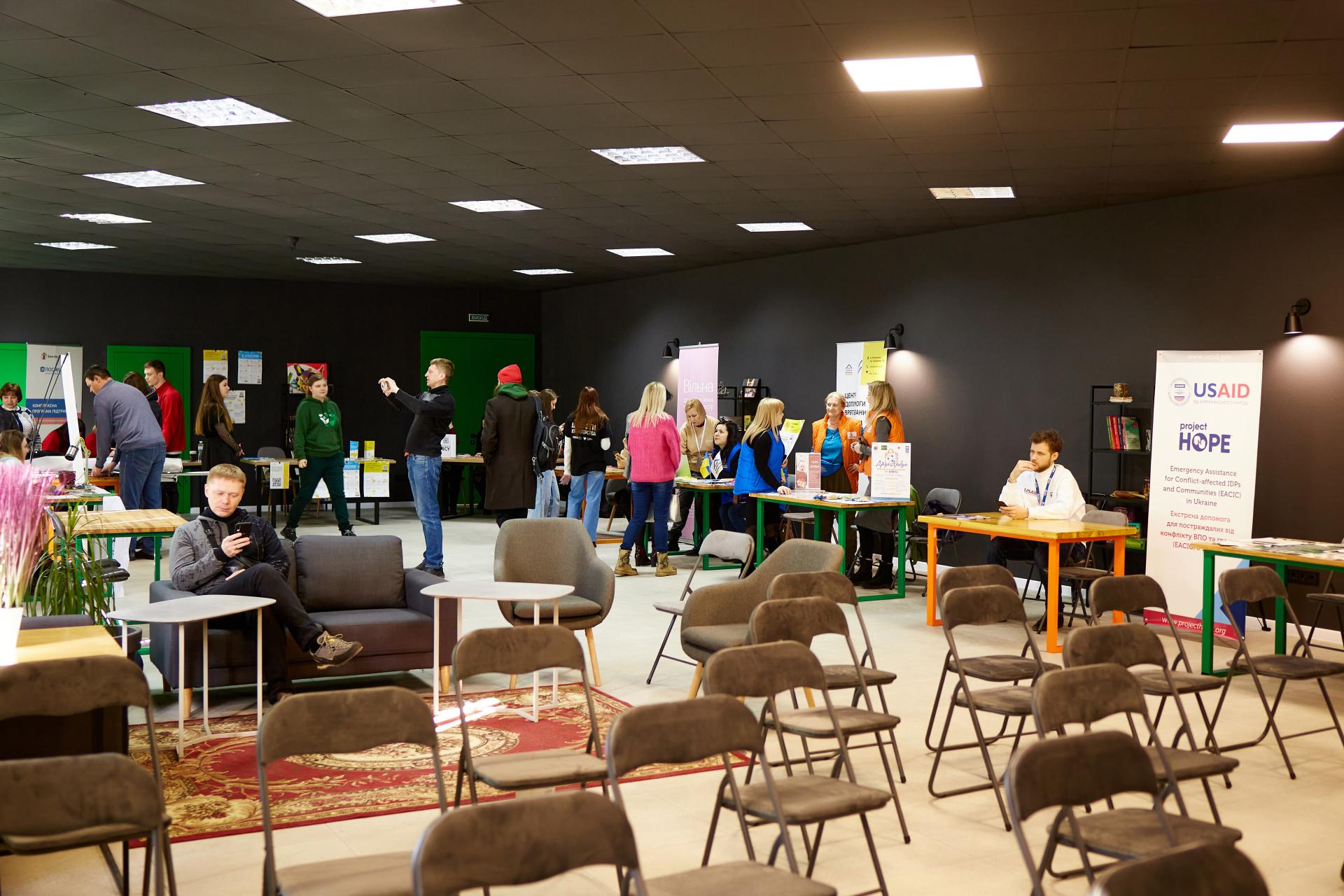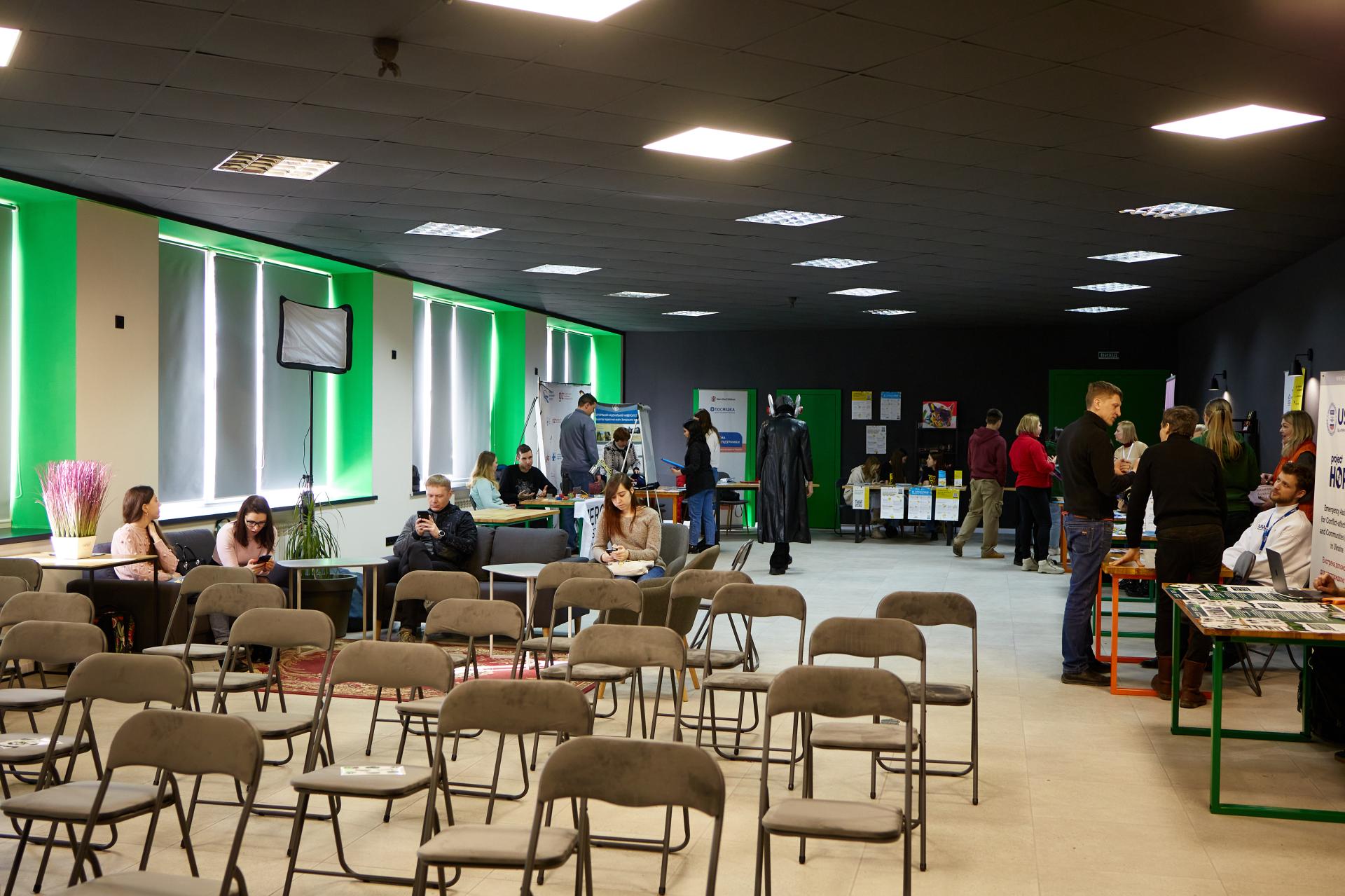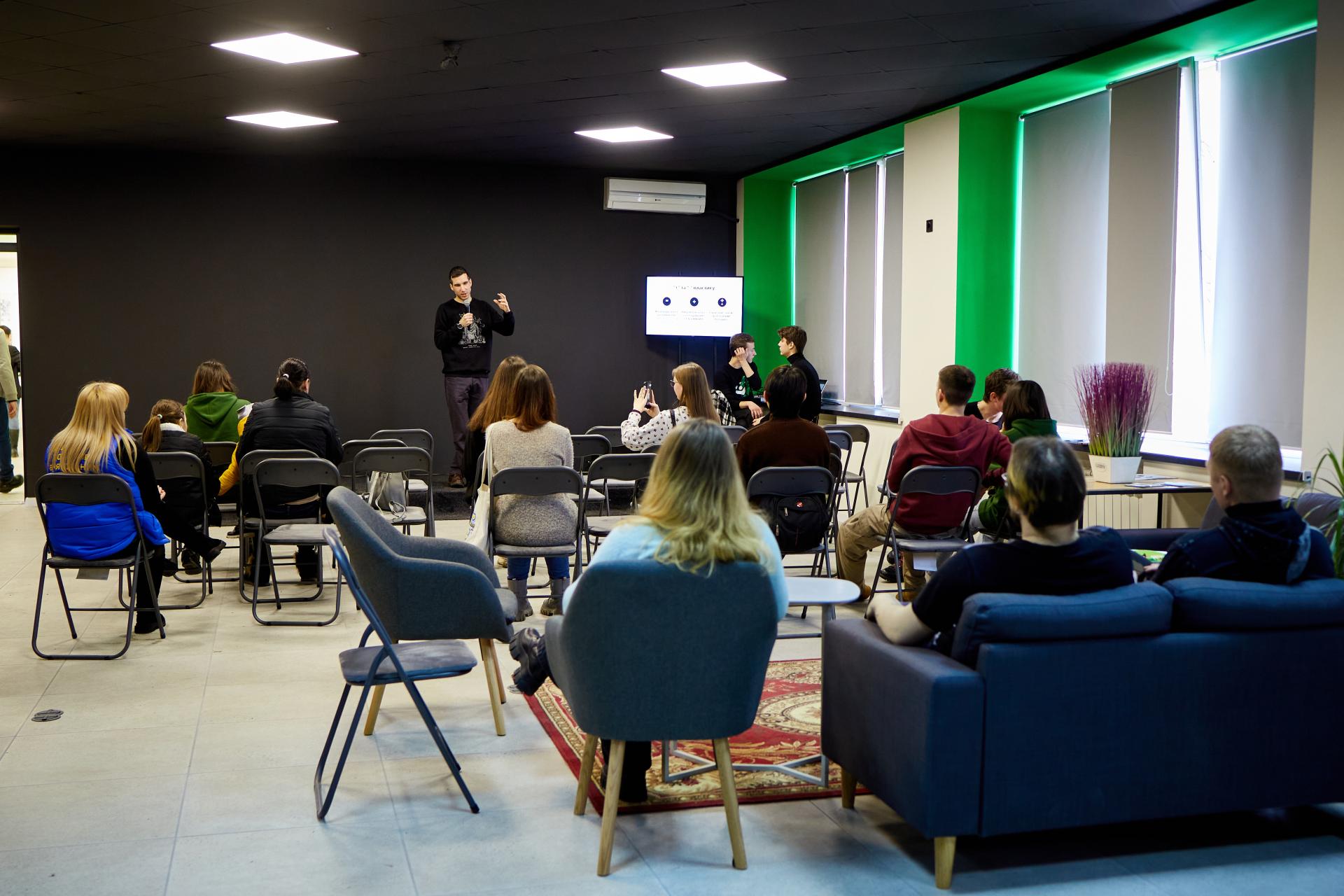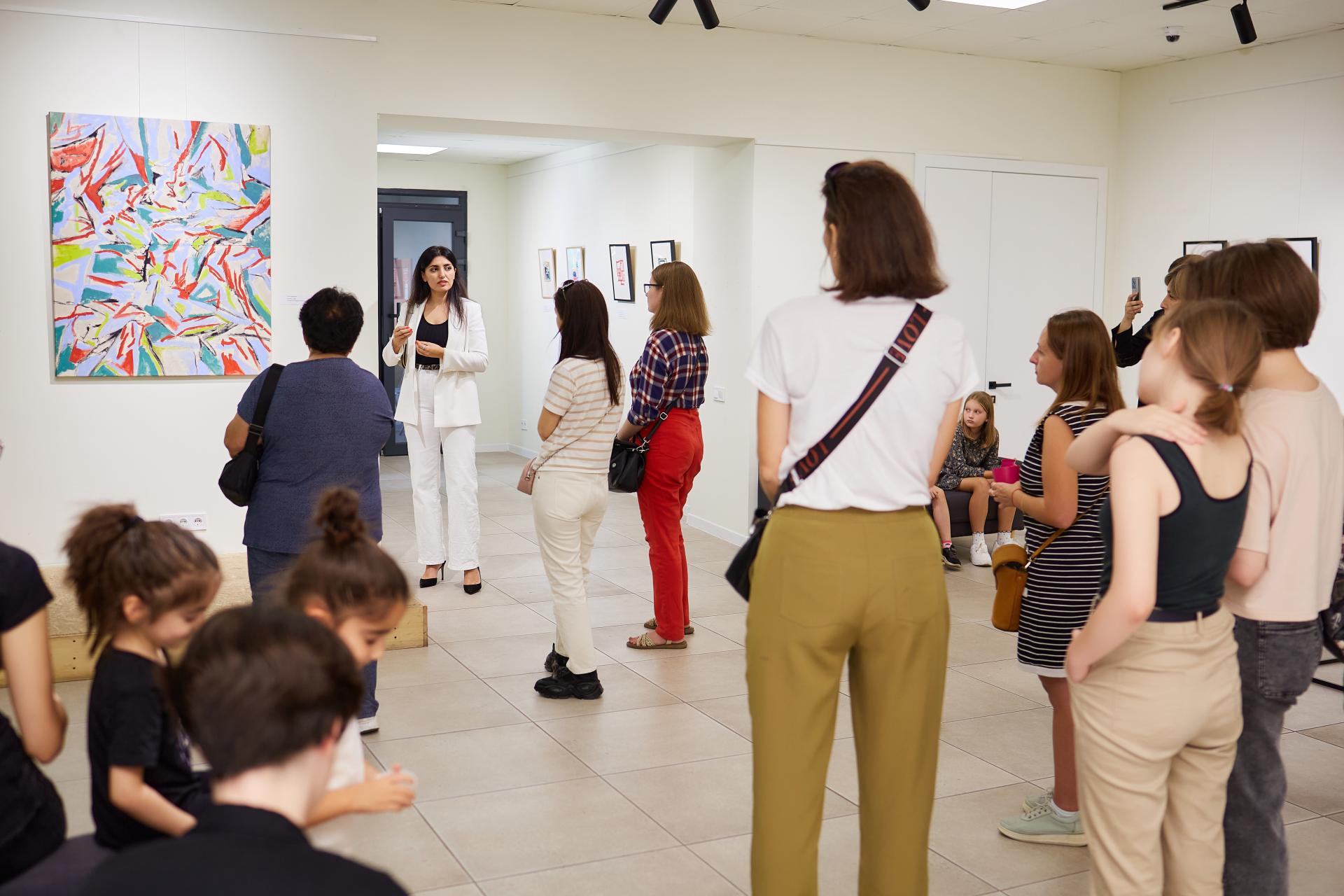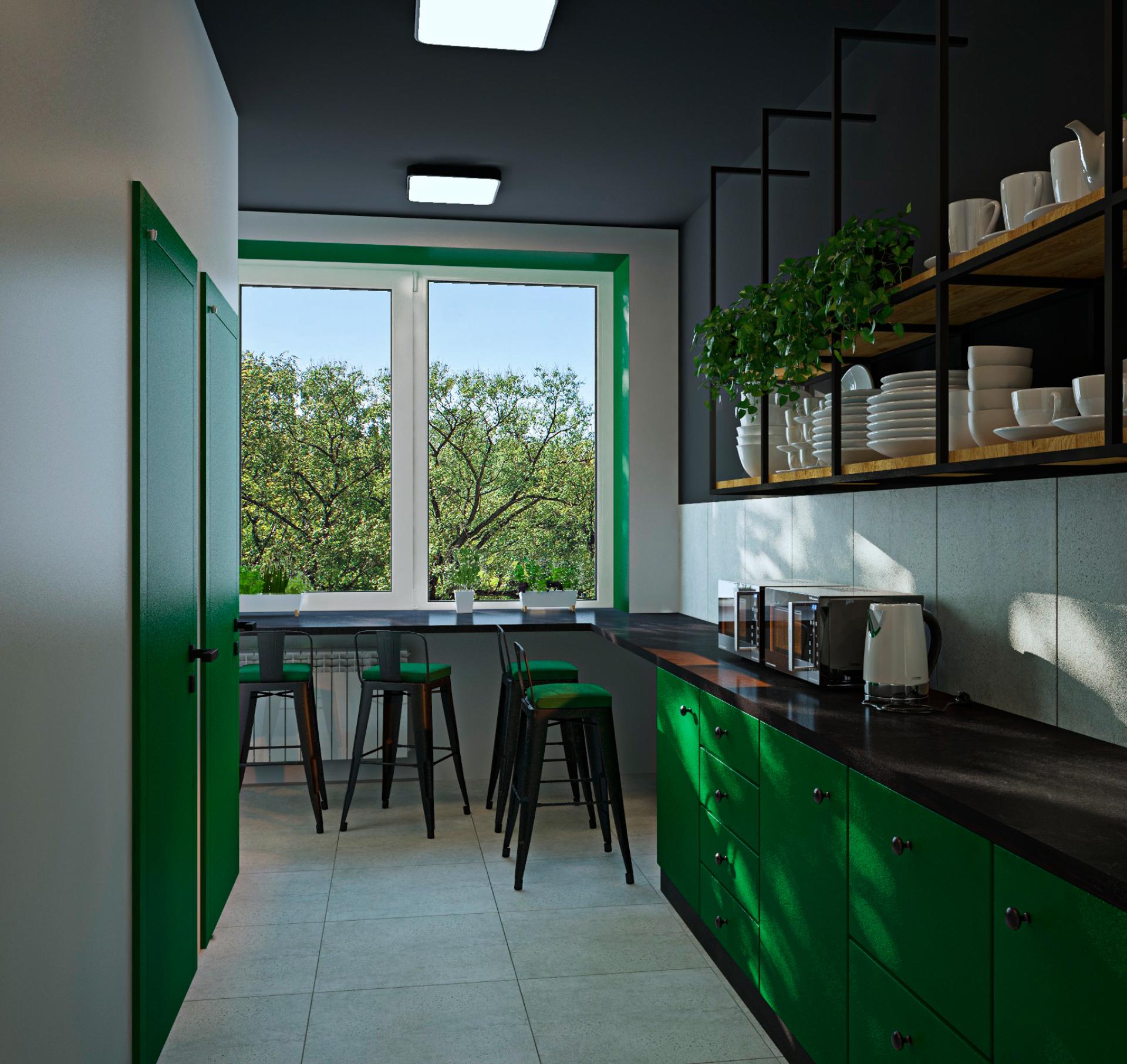Public Center
Basic information
Project Title
Public Center
Full project title
Public center for internally displaced people
Category
Prioritising the places and people that need it the most
Project Description
Due to the Russian aggression and the occupation of part of the territories of Ukraine, the issue of accommodation, assistance and socialization of internally displaced persons (IDPs) in Zaporizhzhia has become an issue.
From the beginning of the full-scale invasion, the humanitarian headquarters provided everything necessary for the refugees, but gradually the requests changed from humanitarian to more often the question of integration.
The idea of creating a Civic Center appeared.
From the beginning of the full-scale invasion, the humanitarian headquarters provided everything necessary for the refugees, but gradually the requests changed from humanitarian to more often the question of integration.
The idea of creating a Civic Center appeared.
Geographical Scope
Local
Project Region
Zaporizhzhia city, Ukraine, Ukraine
Urban or rural issues
Mainly urban
Physical or other transformations
It refers to a physical transformation of the built environment (hard investment)
EU Programme or fund
Yes
Which funds
Creative Europe
Description of the project
Summary
The Community Center for IDPs is a project of the Zaporizhzhia Regional Youth Center aimed at helping new arrivals in Zaporizhzhia whose number has already exceeded 150,000 people. The Center helps IDPs with integration into a new community, job search, business opening or relocation, offers psychological assistance, etc.
Since the beginning of the full-scale invasion, the Youth Center served as the Humanitarian Headquarters, where decisions were made concerning displaced persons and the military. All requests for help are directed to the call center so that we are constantly aware of the current needs.
After some time, requests from IDPs started to shift more and more from humanitarian needs (food, water, hygiene, etc.) towards integration issues, i.e. job search, information about the city, and cultural events. It was that moment when the idea of a Civic Center came up. We had an understanding that the format of the headquarters is ineffective for solving such needs of IDPs, so another format should be launched.
Our task was to create a place presenting arriving people with all additional opportunities. We have chosen the following main directions: the career and professional development section, for which we want to create a co-working area; the creative section, which will work in a gallery space; and the media section.
The Community Center is located on the second floor of the Regional Youth Center and occupies an area of 363m2. This area is divided into four adjacent rooms:
1. Large co-working space with Skype rooms, workplaces, and a stage for presentations, all equipped with all necessary equipment
2. Gallery with appropriate lightning and systems providing conditions for hosting exhibitions of different levels
3. Media center with high speed and reliable internet connection to enable publishing of the latest news and sharing stories with a wide audience at any time.
4. Kitchen and additional premises (which are still under construction) to ensur
Since the beginning of the full-scale invasion, the Youth Center served as the Humanitarian Headquarters, where decisions were made concerning displaced persons and the military. All requests for help are directed to the call center so that we are constantly aware of the current needs.
After some time, requests from IDPs started to shift more and more from humanitarian needs (food, water, hygiene, etc.) towards integration issues, i.e. job search, information about the city, and cultural events. It was that moment when the idea of a Civic Center came up. We had an understanding that the format of the headquarters is ineffective for solving such needs of IDPs, so another format should be launched.
Our task was to create a place presenting arriving people with all additional opportunities. We have chosen the following main directions: the career and professional development section, for which we want to create a co-working area; the creative section, which will work in a gallery space; and the media section.
The Community Center is located on the second floor of the Regional Youth Center and occupies an area of 363m2. This area is divided into four adjacent rooms:
1. Large co-working space with Skype rooms, workplaces, and a stage for presentations, all equipped with all necessary equipment
2. Gallery with appropriate lightning and systems providing conditions for hosting exhibitions of different levels
3. Media center with high speed and reliable internet connection to enable publishing of the latest news and sharing stories with a wide audience at any time.
4. Kitchen and additional premises (which are still under construction) to ensur
Key objectives for sustainability
Our key objective is to create a space where all newly arrived internally displaced persons can find everything they need.
The main directions:
- Career and professional development section (co-working area and auxiliary premises)
- Creative section (gallery)
- Media section
The main directions:
- Career and professional development section (co-working area and auxiliary premises)
- Creative section (gallery)
- Media section
Key objectives for aesthetics and quality
The main objective of the project is to modernize the second floor of the Youth Center to deal with the problems caused by the war. The floor is divided into three zones: a working area, a gallery, and a media center. Our goal is to create a modern and functional space for internally displaced persons, so the interior design is stylistically close to minimalism with the accent colors taken from the regional Youth Center, where the Public Center for IDPs is located.
During the development of the project, we studied similar centers and offices located in the other cities to understand how a comfortable and modern space of this kind works nowadays. It helped us in developing and implementing some technical aspects, creating additional areas, selecting basic colors and materials so that the visitors could feel comfortable.
We chose the shades of gray and black as the main colors as it is a universal solution for public places. These colors do not strain the eyes and are perceived neutrally by the visitors. We also added the shades of green. Being the brand colors of the Zaporizhzhia Regional Youth Center, they also serve as an accent. Such a decision helps to revive the space a little, breathing some dynamics and new energy into it. To make it comfortable and cozy for visitors, part of the furniture was made of wood of warm tones. It also looks nice when combined with the main colors.
During the development of the project, we studied similar centers and offices located in the other cities to understand how a comfortable and modern space of this kind works nowadays. It helped us in developing and implementing some technical aspects, creating additional areas, selecting basic colors and materials so that the visitors could feel comfortable.
We chose the shades of gray and black as the main colors as it is a universal solution for public places. These colors do not strain the eyes and are perceived neutrally by the visitors. We also added the shades of green. Being the brand colors of the Zaporizhzhia Regional Youth Center, they also serve as an accent. Such a decision helps to revive the space a little, breathing some dynamics and new energy into it. To make it comfortable and cozy for visitors, part of the furniture was made of wood of warm tones. It also looks nice when combined with the main colors.
Key objectives for inclusion
The project is developed in compliance with all applicable requirements and standards regarding accessibility for people with limited mobility and inclusivity in general. The area was provided with wide doorways and passages. The floor is at the same level in all rooms to ease navigation through the area for all visitors.
The premises are designed to provide maximum mobility. In particular, thanks to the fact that most of the furniture is portable (i.e. can be easily moved), the space of the Center can be easily transformed for any needs or events. Any section of the Center can be adapted to fit the necessary number of people so that their requirements and capabilities are considered and they do not feel any discomfort.
The premises are designed to provide maximum mobility. In particular, thanks to the fact that most of the furniture is portable (i.e. can be easily moved), the space of the Center can be easily transformed for any needs or events. Any section of the Center can be adapted to fit the necessary number of people so that their requirements and capabilities are considered and they do not feel any discomfort.
Results in relation to category
The implementation of the project resulted in assistance for the IDPs to integrate into a new city. According to the plan, the number of beneficiaries of the Civic Center will be more than 5,000 people in the first year.
Currently, the first aid training courses are being held permanently. The importance of such courses for the civilian population cannot be overstated during a war. Psychological assistance is also provided for those who need it. In addition, cultural events, exhibitions, and workshops are being held on the Center premises. The Center offers support measures for youth and provides for the involvement of IDPs in their integration into the city. There is a comfortable co-working space to work or study. And, thanks to the media center, there is an opportunity to deliver the latest news or share the refugees’ stories with a wide audience.
Currently, the first aid training courses are being held permanently. The importance of such courses for the civilian population cannot be overstated during a war. Psychological assistance is also provided for those who need it. In addition, cultural events, exhibitions, and workshops are being held on the Center premises. The Center offers support measures for youth and provides for the involvement of IDPs in their integration into the city. There is a comfortable co-working space to work or study. And, thanks to the media center, there is an opportunity to deliver the latest news or share the refugees’ stories with a wide audience.
How Citizens benefit
The work on the project has brought together architects, a design engineer, volunteers involved in renovations, volunteers involved in the implementation of the IDPs Community Center program, specialists, and others.
In particular, among other volunteers of the Humanitarian Headquarters involved in the project, some female architects worked on the architectural solution for the space. Being a part of the construction department of the Humanitarian Headquarters they gained an opportunity to implement their creative idea and thank the city that sheltered them.
Volunteers involved in the implementation of the design managed to create a cozy space with their own hands. After the renovation was completed, a number of projects already worked in the Civic Center and new organizations and initiatives are being created right now. Both the local and internally displaced youth are actively involved. Forums, trainings, open discussions, film screenings, exhibitions, and informal meetings of citizens with the municipality representatives are often held in the Community Center. Various events and activities take place in the space almost every week. Young people spend their free time here, freelancers work, and new social initiatives are born.
In particular, among other volunteers of the Humanitarian Headquarters involved in the project, some female architects worked on the architectural solution for the space. Being a part of the construction department of the Humanitarian Headquarters they gained an opportunity to implement their creative idea and thank the city that sheltered them.
Volunteers involved in the implementation of the design managed to create a cozy space with their own hands. After the renovation was completed, a number of projects already worked in the Civic Center and new organizations and initiatives are being created right now. Both the local and internally displaced youth are actively involved. Forums, trainings, open discussions, film screenings, exhibitions, and informal meetings of citizens with the municipality representatives are often held in the Community Center. Various events and activities take place in the space almost every week. Young people spend their free time here, freelancers work, and new social initiatives are born.
Physical or other transformations
It refers to a physical transformation of the built environment (hard investment)
Innovative character
The innovative solution of the project was that it resulted not only in the provision of humanitarian aid but also in uniting IDPs in one location. A new space appeared where displaced persons can communicate, make acquaintances, acquire new knowledge, and share their stories with others. That is why exactly four adjacent rooms were created, which included a large co-working space with Skype rooms, workplaces, and a stage for presentations; a gallery with appropriate lightning and systems providing conditions for hosting exhibitions of different levels; a media center with high speed and reliable internet connection to enable publishing of the latest news and sharing stories with a wide audience. We will also equip the kitchen and additional premises so that even long-term work in the Civic Center would be comfortable.
Disciplines/knowledge reflected
Project management, architectural design, civil engineering, graphic design.
The concept of the Public Center for IDPs project was created by the team of Zaporizhia Regional Youth Center. This project also made it possible to create several sections for different activities within the Center. Based on the project, the construction department team (designers) was tasked to develop an interior design of the Civic Center, which involved the creation of an architectural project for this interior design. Architects developed the conceptual solution for the design project, created drawings, and required visualizations. The design engineer compiled the technical part of the project and was responsible for implementing the interior part of the project.
The concept of the Public Center for IDPs project was created by the team of Zaporizhia Regional Youth Center. This project also made it possible to create several sections for different activities within the Center. Based on the project, the construction department team (designers) was tasked to develop an interior design of the Civic Center, which involved the creation of an architectural project for this interior design. Architects developed the conceptual solution for the design project, created drawings, and required visualizations. The design engineer compiled the technical part of the project and was responsible for implementing the interior part of the project.
Methodology used
The task at hand was:
To create a design project for four adjacent premises in the Community Center, located on the second floor of the Zaporizhzhia Regional Youth Center and occupying 363 m2 of space. The premises should include the following:
1. Large co-working space with Skype rooms, workplaces, and a stage for presentations, all equipped with all necessary equipment
2. Gallery with appropriate lightning and systems providing conditions for hosting exhibitions of different levels
3. Media center with high speed and reliable internet connection to enable publishing of the latest news and sharing stories with a wide audience at any time
4. Kitchen and additional premises to ensure comfortable work conditions
At the time of the project's start, the premises of the Center accommodated one of the largest Humanitarian Headquarters in Zaporizhzhia. These Headquarters have been functioning since the first day of the war and met the first needs of victims of the Russian aggression on the territory of Ukraine.
The goal was to create a modern and functional space for internally displaced persons, so the interior design is stylistically close to minimalism with the Youth Center’s brand colors taken as the accent colors. During the development of the project, we studied similar centers and offices located in other cities to understand how a comfortable and modern space of this kind works nowadays. It helped us in developing and implementing some technical aspects, creating additional areas, selecting basic colors and materials so that the visitors could feel comfortable.
To create a design project for four adjacent premises in the Community Center, located on the second floor of the Zaporizhzhia Regional Youth Center and occupying 363 m2 of space. The premises should include the following:
1. Large co-working space with Skype rooms, workplaces, and a stage for presentations, all equipped with all necessary equipment
2. Gallery with appropriate lightning and systems providing conditions for hosting exhibitions of different levels
3. Media center with high speed and reliable internet connection to enable publishing of the latest news and sharing stories with a wide audience at any time
4. Kitchen and additional premises to ensure comfortable work conditions
At the time of the project's start, the premises of the Center accommodated one of the largest Humanitarian Headquarters in Zaporizhzhia. These Headquarters have been functioning since the first day of the war and met the first needs of victims of the Russian aggression on the territory of Ukraine.
The goal was to create a modern and functional space for internally displaced persons, so the interior design is stylistically close to minimalism with the Youth Center’s brand colors taken as the accent colors. During the development of the project, we studied similar centers and offices located in other cities to understand how a comfortable and modern space of this kind works nowadays. It helped us in developing and implementing some technical aspects, creating additional areas, selecting basic colors and materials so that the visitors could feel comfortable.
How stakeholders are engaged
Zaporizhzhia Regional Youth Center simultaneously acts as the main stakeholder in the youth policy for the city and the region. The Center team creates various programs, arranges fests, develops volunteer movements, works with different youth communities in general, provides mentoring and resource support to youth initiatives in particular, and promotes the development of local businesses. In total, about 100 projects are implemented per year.
The Regional Youth Center served as the base for the Humanitarian Headquarters which helped almost everyone who suffered because of the war. Now the Civic Center for IDPs is in its place.
"Creative Europe" — project financing and support
Designers team —architectural solution for the project of the interiors of the Civic Center for IDPs.
The project was developed by architects Karolina Michelle Makaya and Yuliya Filobok who are internally displaced persons. They managed to effectively plan the space for the needs of youth and IDPs and created a cozy atmosphere in the renovated premises.
The project master and design engineer — Oleksiy Selivanov. Together with volunteers, Oleksiy brought the design project to life.
Volunteers — performed work on dismantling, installation, and actual implementation of the interior design. After completion of the main part of the renovation, a large part of these people remained to volunteer in the Civic Center.
Each of the stakeholders is very important in the creation and implementation of the project. Everyone is doing their part which makes the project development and support possible.
The Regional Youth Center served as the base for the Humanitarian Headquarters which helped almost everyone who suffered because of the war. Now the Civic Center for IDPs is in its place.
"Creative Europe" — project financing and support
Designers team —architectural solution for the project of the interiors of the Civic Center for IDPs.
The project was developed by architects Karolina Michelle Makaya and Yuliya Filobok who are internally displaced persons. They managed to effectively plan the space for the needs of youth and IDPs and created a cozy atmosphere in the renovated premises.
The project master and design engineer — Oleksiy Selivanov. Together with volunteers, Oleksiy brought the design project to life.
Volunteers — performed work on dismantling, installation, and actual implementation of the interior design. After completion of the main part of the renovation, a large part of these people remained to volunteer in the Civic Center.
Each of the stakeholders is very important in the creation and implementation of the project. Everyone is doing their part which makes the project development and support possible.
Global challenges
The start of active hostilities on February 24, 2022, along with the introduction of martial law in Ukraine caused mass displacement of the population — citizens left their homes seeking safety and protection. Currently, the number of officially registered internally displaced persons in the country reaches 4.9 million people.
The Community Center for IDPs is a project of the Zaporizhzhia Regional Youth Center aimed at helping new arrivals in Zaporizhzhia whose number has already exceeded 150,000 people. The Center helps IDPs with integration into a new community, provides psychological and humanitarian assistance, offers consultations on job search, business opening or relocation, and so on.
The Community Center for IDPs is a project of the Zaporizhzhia Regional Youth Center aimed at helping new arrivals in Zaporizhzhia whose number has already exceeded 150,000 people. The Center helps IDPs with integration into a new community, provides psychological and humanitarian assistance, offers consultations on job search, business opening or relocation, and so on.
Learning transferred to other parties
The main method of help to internally displaced persons was their unification and provision of assistance in one location.
Unfortunately, during the war, many people were forced to abandon their normal lives and flee to safer regions of Ukraine. In a new city, a person feels isolated and confused, faces difficulties with integration and employment.
The Humanitarian Headquarters unites internally displaced persons, makes it possible for them to communicate and make new acquaintances based on common problems and past experiences.
The main elements of the project were:
- uniting IDPs in one location
- constant monitoring of problems and response to them
- arrangement of cultural events for communication and integration of IDPs
- providing humanitarian and psychological aid
This methodology is applicable in countries that receive refugees, as well as in countries where hostilities are taking place.
Unfortunately, during the war, many people were forced to abandon their normal lives and flee to safer regions of Ukraine. In a new city, a person feels isolated and confused, faces difficulties with integration and employment.
The Humanitarian Headquarters unites internally displaced persons, makes it possible for them to communicate and make new acquaintances based on common problems and past experiences.
The main elements of the project were:
- uniting IDPs in one location
- constant monitoring of problems and response to them
- arrangement of cultural events for communication and integration of IDPs
- providing humanitarian and psychological aid
This methodology is applicable in countries that receive refugees, as well as in countries where hostilities are taking place.
Keywords
Young
IDPs
Equality
Innovation and flexibility
Focus on the final beneficiary

